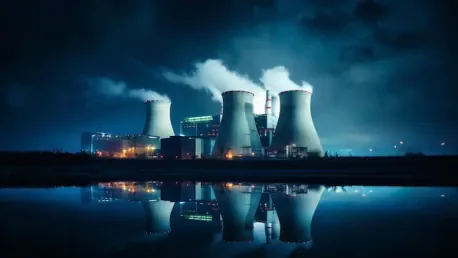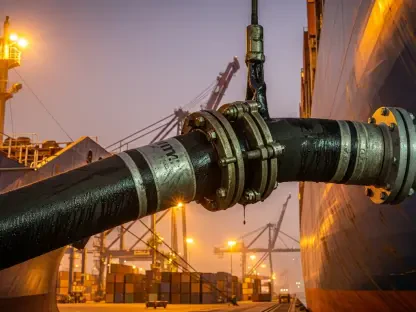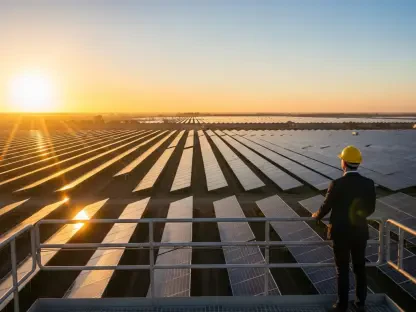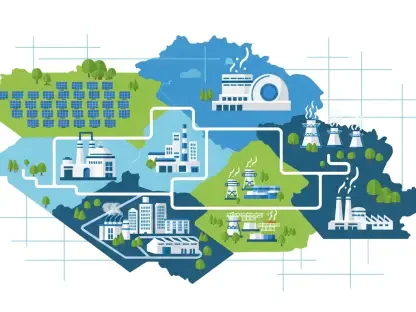Christopher Hailstone, our Utilities expert, has extensive experience in energy management, renewable energy, and grid reliability. Today, he offers insights on the latest findings from the Red Book regarding global uranium resources and the emerging nuclear energy boom.
Can you explain the significance of the Red Book’s findings on global uranium resources?
The Red Book’s findings are crucial for understanding the availability of uranium needed to fuel a burgeoning nuclear energy sector. It underscores the necessity of investing in new mines to meet future demand, highlighting both the available resources and the challenges in extracting and utilizing them efficiently.
How have global recoverable uranium resources changed as of January 2023 compared to previous years?
There has been a marginal increase of less than 0.5% in global recoverable uranium resources since the previous year. This slight uptick suggests that, while new resources are being discovered and added, the rate of discovery is not significantly outpacing consumption. This trend signals a stable but potentially constrained supply environment in the near future.
What factors have contributed to the increased expenditure in uranium exploration and mine development post-Covid?
Post-Covid, there’s been a renewed emphasis on energy security and diversification, leading to increased uranium exploration and mine development. Initially, the pandemic strained the uranium market, causing delays and reduced investment. However, the recovery has accelerated due to rising demand for nuclear energy and the need to build resilience in energy supply chains.
What are the projected trends for uranium production in the coming years?
Uranium production is expected to grow over the next few years, matching the expanding need for nuclear energy. However, new production centers might face hurdles including investment aversion and complex regulatory frameworks. Geopolitical challenges and technical issues in developing new mines could further complicate expansion efforts.
Can you discuss Australia’s dominance in the global uranium resource market?
Australia holds a substantial share of global uranium resources, primarily due to the Olympic Dam deposit in South Australia. This site alone accounts for a significant portion of both Australia’s and the world’s uranium reserves, highlighting its importance in the global supply chain.
How does Kazakhstan’s uranium production compare to other top-producing countries?
Kazakhstan leads in uranium production, surpassing all other top producers combined. Its extensive and efficient mining operations, coupled with favorable geological conditions, make it the predominant player in the uranium market.
Why are governments and corporations increasingly turning to nuclear power?
Nuclear power is seen as a reliable, low-carbon energy source that can support base-load power demands. Global initiatives, such as the pledge at Cop28 to triple nuclear capacity by 2050, highlight the commitment to this energy form. Corporations like Microsoft and Amazon are also investing in nuclear power to ensure stable energy supplies for their data centers.
What did the International Energy Agency mean by stating that nuclear energy has entered “a new era”?
The International Energy Agency’s statement reflects the resurgence of interest and investment in nuclear energy. Since 2020, annual investment has surged notably, driven by higher demand for clean and dependable power sources amidst global energy transitions.
What are the implications of the projected 130% increase in nuclear capacity by 2050?
This massive increase in nuclear capacity will necessitate significant investment in uranium mining to supply the necessary fuel. Without ramping up mining activities, there could be shortages that would undermine the expansion goals and compromise energy security.
How do potential uranium resources in countries like China, Namibia, Niger, Turkey, and the US affect the global market?
These countries have seen increases in potential uranium resources, which could diversify and strengthen the global supply chain. This expansion is crucial for relieving some of the production pressure from dominant countries and ensuring a more stable and responsive market.
Considering the concentration of uranium production in just a few countries, how might this impact global supply and security?
The concentration of production heightens risks around geopolitical stability and supply bottlenecks. Efforts to diversify production across more regions can mitigate these vulnerabilities and ensure reliable access to uranium globally.
What steps are needed immediately to ensure adequate uranium supplies in the medium term?
Immediate actions include ramping up exploration activities, streamlining regulatory processes, and increasing investment in mining infrastructure to boost production capacity. These steps are vital to prepare for the anticipated spike in demand.
How can risk-averse investment climates and lengthy regulatory processes be addressed to facilitate the establishment of new uranium mines?
Addressing these issues involves policy reforms to simplify regulations and incentivize investments. Governments and industry stakeholders must collaborate to reduce bureaucratic hurdles and create a more attractive investment environment for uranium mining ventures.
Can you elaborate on the major findings regarding uranium resources and production in the Red Book’s 2023 edition?
The 2023 edition emphasizes the slight growth in identified uranium resources and increased expenditures post-pandemic. It also highlights production growth trends and the challenges associated with developing new mines amidst complex regulatory landscapes and geopolitical tensions.
Do you have any advice for our readers?
Stay informed and proactive about energy trends and investments. Understanding the dynamics of energy resources and their geopolitical implications can offer significant strategic advantages in various fields, from business decisions to policy-making.









